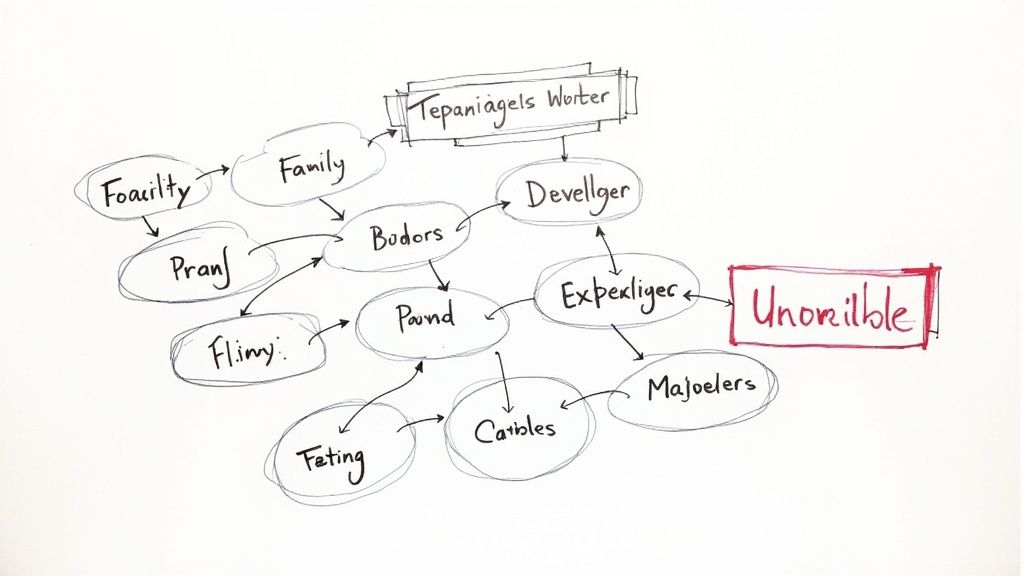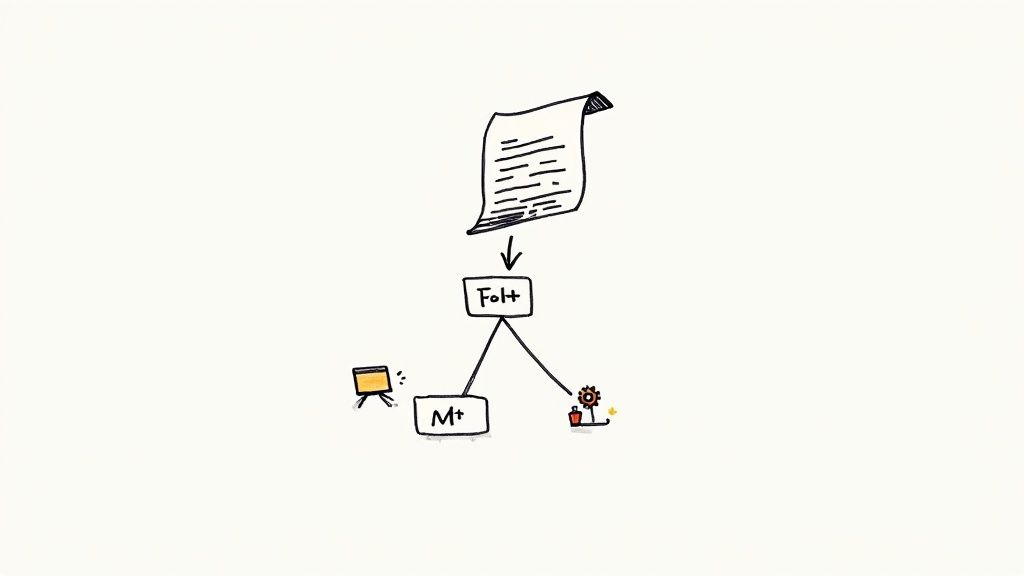Flaky Test Detection and Prevention: A Comprehensive Developer's Guide

Understanding Flaky Tests: The Hidden Team Productivity Killer

Every software development team has encountered them - those frustrating tests that pass one moment and fail the next, despite no changes to the code. These flaky tests create uncertainty and waste time, becoming a major drain on team productivity that often goes unrecognized.
The Impact of Flaky Tests on Team Productivity
When tests become unreliable, developers start losing faith in the entire testing process. Teams begin skipping tests or ignoring failures, increasing the risk that real bugs will slip through into production code. This creates a dangerous cycle where testing becomes less and less effective.
The time cost is substantial. Rather than working on new features or fixing actual bugs, developers get stuck re-running flaky tests and investigating false failures. According to JetBrains, these inconsistent results often stem from environment issues, timing problems, and test order dependencies. This constant troubleshooting grinds development to a halt and undermines the benefits of continuous integration.
The Hidden Costs of Flaky Tests
The true price of flaky tests extends far beyond wasted developer hours. When teams can't trust their tests, releases get delayed and deadlines slip. In fast-moving projects, these delays directly impact the bottom line through missed opportunities and slower time to market.
Quality also suffers. As faith in the test suite erodes, more defects make it to production. Teams spend increasing amounts of time putting out fires rather than building new features. The mounting technical debt creates a negative spiral that's hard to escape.
Identifying and Addressing Flaky Tests
Finding flaky tests requires a systematic approach. Teams need to track test results over time to spot patterns of inconsistency. Tools that monitor test execution and flag suspicious patterns can help pinpoint problem areas quickly.
Once found, fixing flaky tests should be a top priority. Simply disabling or ignoring them only masks the underlying issues. Teams must:
- Analyze test environments for inconsistencies
- Check for race conditions and timing issues
- Review test dependencies and isolation
- Ensure proper test cleanup
- Monitor resource usage and constraints
By taking flaky tests seriously and addressing their root causes, teams can build more reliable test suites that actually serve their intended purpose. The investment in fixing flaky tests pays off through improved productivity, faster releases, and higher quality software.
The path forward is clear: identify flaky tests early, fix them properly, and prevent them from undermining your development process. Your team's productivity depends on it.
The Root Causes Behind Test Flakiness: Beyond the Obvious

When tests fail inconsistently, it's tempting to focus only on the immediate symptoms. But creating truly reliable tests requires understanding the deeper issues at play. Let's examine both the common causes of flaky tests and the less obvious factors that can derail your testing efforts.
Common Culprits: The Usual Suspects
Several well-known issues frequently cause tests to become unreliable. While these problems can be frustrating, they're often straightforward to identify and fix:
- Test Order Dependency: When tests depend on the state from previous tests, changing the execution order can break them. Each test should stand on its own.
- Asynchronous Operations: Network calls, database queries, and other async processes need careful timing management. Without proper handling, tests can fail when operations take longer than expected.
- Resource Leaks: Tests that don't clean up after themselves - like leaving memory allocated or files open - can cause cascading failures in subsequent tests.
- Shared State: Global variables and shared databases become points of contention when multiple tests try to modify them simultaneously.
Subtle Troublemakers: The Hidden Dangers
Beyond the obvious issues lie more complex problems that can be harder to track down:
- Intermittent External Dependencies: Outside systems like third-party APIs can introduce unpredictability through network issues or behavioral changes.
- Test Infrastructure Issues: Sometimes the problem isn't the test itself but the environment it runs in - unstable build servers or network setup can mask the real issues.
- Unintentional Side Effects: Tests might affect the system in ways you didn't expect, causing problems for other tests that run later.
- Poorly Designed Tests: Complex or poorly isolated tests often fail randomly. Research from the University of Illinois at Urbana-Champaign shows that 78% of flaky tests show problems from their very first run. Learn more about this research here.
Addressing the Root Causes
To build stable tests and reliable CI/CD pipelines, teams need to tackle these issues head-on. Tools like Mergify help by automating code merges safely, which reduces the chance of integration problems causing flaky tests. This lets developers spend more time writing robust tests and fixing the underlying causes of instability.
Advanced Detection Strategies That Actually Work

Finding and fixing flaky tests requires more than just running failed tests again. The best development teams use smart detection methods to catch problems early, before they slow down the entire development process. Let's look at practical approaches that leading software companies use and how you can apply them to your projects.
Monitoring and Alerting: Real-Time Flakiness Detection
Good monitoring shows you exactly when and where tests become unstable. Modern tools track test results continuously and spot patterns that signal growing problems. When a test starts failing more often than usual, the system sends an alert so teams can investigate quickly. For example, if a test that normally passes 95% of the time suddenly fails three times in a row, that's a clear sign something needs attention. Quick responses to these alerts help keep your testing pipeline running smoothly.
Data Analytics and Machine Learning: Predicting Future Flakiness
Advanced data analysis helps teams spot flaky tests before they cause major issues. By studying how tests perform over time, teams can identify which ones are likely to become problematic. This means fixing potential problems early instead of waiting for failures to pile up. For instance, Facebook built a system called the Probabilistic Flakiness Score (PFS) that watches millions of tests and rates how likely each one is to fail unexpectedly. You can read more about their approach here.
Building a Robust Flakiness Detection System
To catch flaky tests effectively, you need several key pieces working together:
- Centralized Test Result Repository: Keep all your test results in one place so you can spot patterns over time
- Automated Monitoring Tools: Set up systems that watch for unusual test behavior and send alerts
- Integration with CI/CD Pipeline: Connect your detection tools directly to your build process
- Customizable Alerting Thresholds: Set different alert levels based on what matters most for your project
These strategies help teams find and fix unstable tests proactively rather than just reacting to failures. This means fewer delayed releases and more time for actual development work. Tools like Mergify can help by handling code merges automatically, which reduces integration issues that often lead to flaky tests. This frees up your team to focus on writing better tests and fixing the root causes of test instability.
Writing Rock-Solid Tests: From Theory to Practice

Let's move beyond just finding flaky tests and focus on preventing them from the start. By building reliable tests from day one, your team can save countless hours of debugging and maintain confidence in your test suite.
Test Isolation: Building Independent Units
The foundation of reliable tests is test isolation. Just like LEGO bricks that can be rearranged without affecting each other, your tests should run independently without shared dependencies. This approach prevents unexpected interactions between tests that can cause sporadic failures.
Key practices for test isolation include:
- Create fresh test data for each test instead of sharing state
- Use local variables rather than global ones
- Clean up any test data or resources after each test completes
- Reset the system state between test runs
Managing Asynchronous Operations: Taming Time-Dependent Tests
Tests involving network calls, database operations, and other async processes need special care. For example, a test might fail if it checks for data before a write operation finishes. Here's how to handle these timing challenges:
- Replace fixed wait times with explicit wait conditions that check for specific events
- Use test doubles to simulate slow operations in a controlled way
- Add retry logic for temperamental operations
- Set reasonable timeouts based on real-world conditions
Handling External Dependencies: Reducing Unpredictability
External services can make tests unreliable through network issues or API changes. To keep your tests stable:
- Use mocks or stubs to simulate external service responses
- Set up contract tests to catch API changes early
- Cache external responses during test runs
- Add fallback behavior for common failure modes
Code Reviews and Test Design: Building a Culture of Quality
Strong testing practices need to be part of your team's DNA. This means:
- Review test code as carefully as production code
- Keep tests focused and simple - complex tests break more often
- Document test requirements and assumptions
- Use tools like Mergify to automate parts of code review and maintain high standards
These strategies will help you build a more reliable test suite that supports rapid development while catching real issues. The upfront investment in good testing practices pays off through faster development cycles and fewer production bugs.
Building a Culture of Testing Excellence
Creating a strong testing culture is key to managing flaky tests in your codebase. Instead of just reacting to problematic tests after they appear, teams need to make preventing them a core part of their workflow. This mindset shift helps control test maintenance costs and builds team confidence in the test results.
Implementing Effective Testing Guidelines
Clear testing guidelines form the foundation of reliable test suites. One critical principle is test isolation, where tests run independently without affecting each other's state. When tests are properly isolated, issues are easier to find and fix. Teams should support these guidelines with practical training and reference materials that help developers write better tests.
Establishing Meaningful Quality Gates
Quality gates in your CI/CD pipeline stop flaky tests from reaching production code. These automated checkpoints block merges when tests don't meet specific stability criteria. For example, if a new test fails intermittently during initial runs, the merge would be blocked until the test is fixed. Tools like Mergify can help by automating these quality checks and merge workflows.
Automated Checks for Early Issue Detection
Automated monitoring tools play a vital role in catching test problems early. By analyzing test run history, these tools can spot patterns that signal potential flakiness before it becomes a major issue. Much like Uber's Testopedia system described in their blog post on flaky tests, this creates a central hub for tracking and improving test reliability.
Fostering Shared Responsibility
Great test practices need buy-in from the whole team. Developers, QA engineers, and DevOps staff should all understand their role in preventing flaky tests. This means making testing a key part of development, not an afterthought. Simple tools like test review checklists and regular training help reinforce good habits. Uber's success with this approach shows how clear ownership makes a difference in managing test flakiness.
Scaling Test Suite Reliability
As teams grow, keeping tests reliable becomes more complex. Strong testing practices from the start, combined with good tools and team commitment, make this scaling challenge manageable. Companies like Uber handle thousands of tests daily while maintaining quality, as shown in their blog post. By making testing excellence a priority early on, teams build a strong base for delivering quality software consistently.
Essential Tools and Frameworks for Combat-Ready Testing
Building reliable tests requires a carefully chosen set of tools and practical approaches. When dealing with flaky tests, having the right tools makes the difference between continual frustration and a smooth testing process. Let's look at the key tools and frameworks that help teams create dependable test suites.
Test Runners and Frameworks: The Foundation of Your Test Suite
The core of any testing strategy starts with selecting the right test runner and framework. These fundamental tools give structure to how tests are organized, run, and reported. Common choices like Jest, Mocha, and pytest include features like:
- Test discovery and execution: Finding and running tests automatically
- Assertions and matchers: Methods to verify expected outputs
- Reporting and logging: Clear test results and failure analysis
- Test setup and teardown: Clean environment management
For instance, Jest can capture UI snapshots to spot unexpected changes, while pytest offers fixtures that make complex test setups straightforward. These tools form the base for creating clear, maintainable tests.
Test Isolation Tools: Preventing Interference
When tests share resources or depend on each other, they become prone to random failures. Test isolation tools help prevent these issues:
- Docker: Creates separate containers for each test run
- Testcontainers: Spins up fresh databases and services as needed
- Mock servers and stubs: Replace external services with controlled test versions
Consider a test that needs a database. Using Testcontainers, you can create a fresh database instance for each test, avoiding data conflicts that could cause inconsistent results.
Retry Mechanisms and Flakiness Detection Tools: Catching and Managing Instability
Even with good prevention, some test instability is hard to avoid in complex systems. Several tools help manage these cases:
- Test retry libraries: Run failed tests again to identify temporary issues
- Flakiness dashboards: Show test stability trends over time
- AI-powered analysis: Find common patterns in test failures
For example, when a test retry tool runs a failed test three more times, it helps show whether the failure was random or points to a real bug. This insight helps teams focus on fixing genuine issues.
CI/CD Integration: Building a Robust Pipeline
Your testing tools need to work smoothly with your CI/CD pipeline to catch problems early. Mergify helps manage this process by handling code merges intelligently and ensuring only stable code reaches production. Key features include:
- Automated merge queue management: Reduces conflicts and ensures fresh test runs
- Merge protections: Stops problematic code from being merged
- CI issue detection: Spots infrastructure problems that affect test reliability
Mergify's smart scheduling helps teams ship updates faster while maintaining quality. By handling merges automatically and enforcing quality checks, teams can focus on writing better code. Learn more about how Mergify can enhance your CI/CD workflow and reduce the impact of flaky tests.





